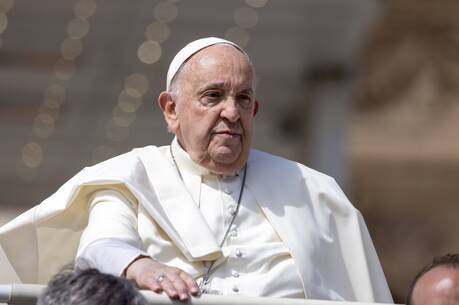One might wonder why there is a second story about the multiplication of loaves (no fish this time). The answer begins with the fact that we are being offered a third story about Jesus working outside Israel. At the end of this story about loaves, Mark notes that Jesus got into a boat with his disciples and came to the region of Dalmanutha. No one today can say precisely where Dalmanutha is; a look at the parallel story in Matthew 15, 39 tells us that, after this multiplication of loaves, Jesus went to the area of Magadan, which most people believe to be Magdala. Thus, Dalmanutha appears to be Magdala, which is on the west shore of the Sea of Galilee and the object of Jesus’ crossing those waters. And so, Jesus entered the boat with his disciples on the east shore of the Sea, a territory of pagans. The multiplication of loaves, then, is a miracle worked on behalf of others than Israelites. One can add arguments to the ’pagan’ nature of this story. Scholars have suggested that the ’seven’ baskets of ’leftovers’, obviously a symbol of abundance, refers subtly to the seven nations who owned the Land before Israel entered it under Joshua and who had to be conquered. A literary sign, then, of paganism blessed by abundance from God. One might go further, fancifully perhaps, with notice that ’4000’ people refers to the four directions which encompass the world and define it – again a symbol of paganism or universality, not limited by Israel. Another step would be to suggest that Jesus’ reference to ’three days’ suggest his resurrection, and would underline that sympathy which brought God’s food to hungry pagans in a movement begun after Jesus’ resurrection. Notice that here it is the pity of Jesus for the crowds that moves him to miracle-working. The disciples’ helplessness does serve to underline`` the astonishing thing Jesus will do, but it is Jesus, not the disciples, who notices the problem and starts to do something about it. They will distribute what he has miraculously multiplied, and so are his helpers, but this story is dominated by Jesus’ pity, not by the fact that others brought the plight of the crowds to Jesus. And then there are the ’loaves’. As in the earlier story of multiplication, ’loaves’ that give sustenance for life’s journey is belief in Jesus, with special attention to his teaching: man does not live on bread alone, but on every word of God (the bread of God). In faith in Jesus, the gentiles, too, will find life eternal. Mark takes time, although it be brief, to include in God’s saving plan all peoples. Again, it is the disciples who are directed to bring this food of life and of sustenance to all peoples; God provides the food, and it is for the disciples to have it reach its destinations. Pharisees challenge Jesus’ actions; Mark’s story-sequence suggests that they challenge him about blessings he gave to foreigners. Jesus refuses to give a sign and uses such language as seems harsh – he speaks in frustration and with tone of authority, and indicates by the passive voice that God will give no sign to ’this generation’ – a term often used among Jewish prophets with negative, judgmental criticism. It is almost as though Jesus had reached the end of his patience with people who, in the face of divine power, will look for more and more proof; is their request just an attempt to keep themselves from belief in Jesus? What other divine sign will satisfy them? Taking a line from Luke, we might conclude that ’even if a man were to return to the dead, they would not believe’ (16, 31). No, the power and the Jewish Scriptures should be enough to bring one to accept Jesus, Messiah and Son of God, as Mark says. John Kilgallen, SJ
Mark 8, 1 – 13 no. 23 Oct. 22
Show Comments (
)
Comments are automatically closed two weeks after an article's initial publication. See our comments policy for more.
The latest from america
A Reflection for Saturday of the Fourth Week of Easter, by Ashley McKinless
A Homily for the Fourth Sunday of Easter, by Father Terrance Klein
Hybrid schools offer greater flexibility, which can allow students to pursue other interests like robotics or nature studies or simply accommodate a teenager’s preferred sleep schedule.
In a speech at his weekly general audience, Pope Francis said that the cardinal virtue of temperance “lets one enjoy the goods of life better.”







